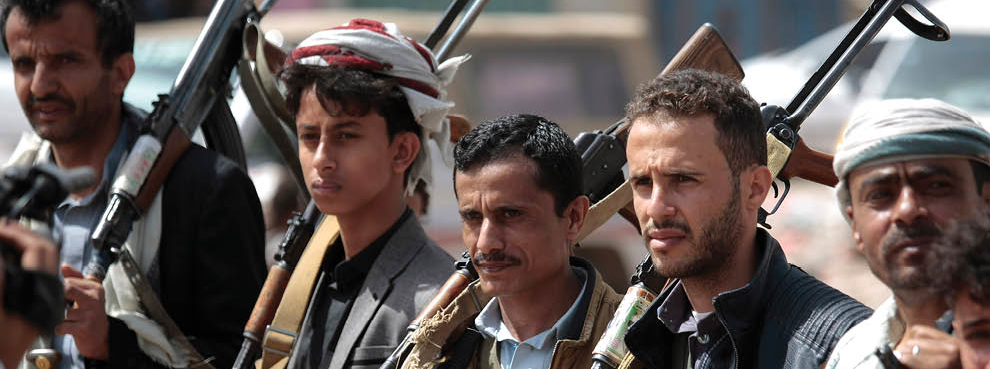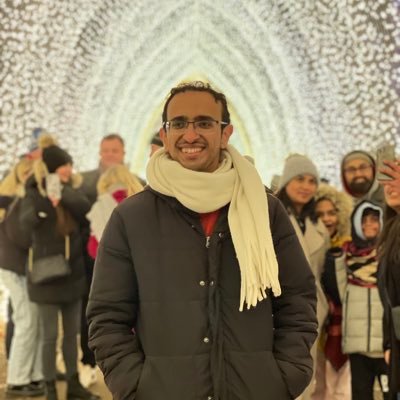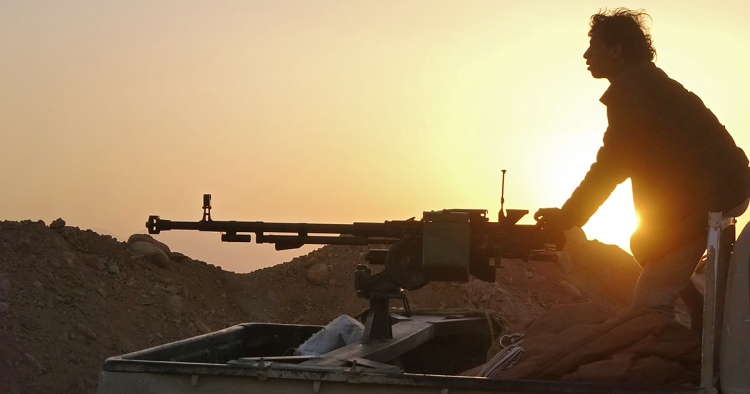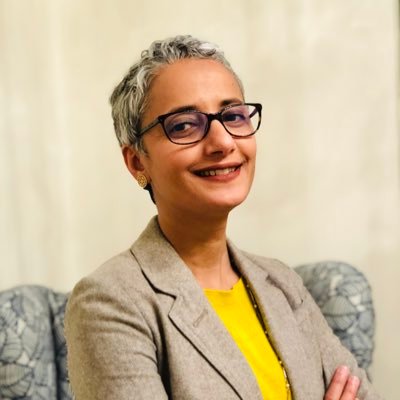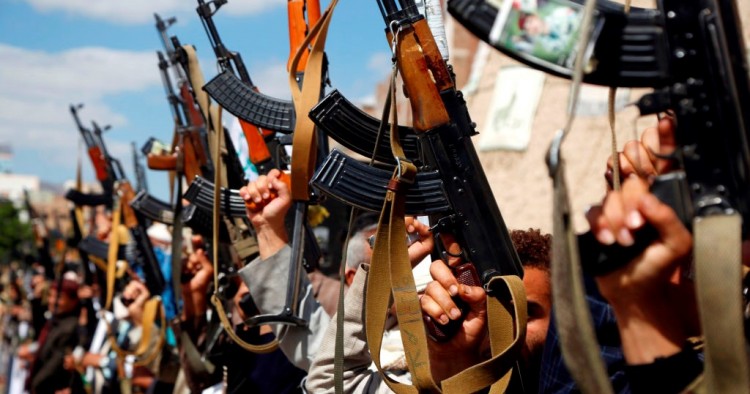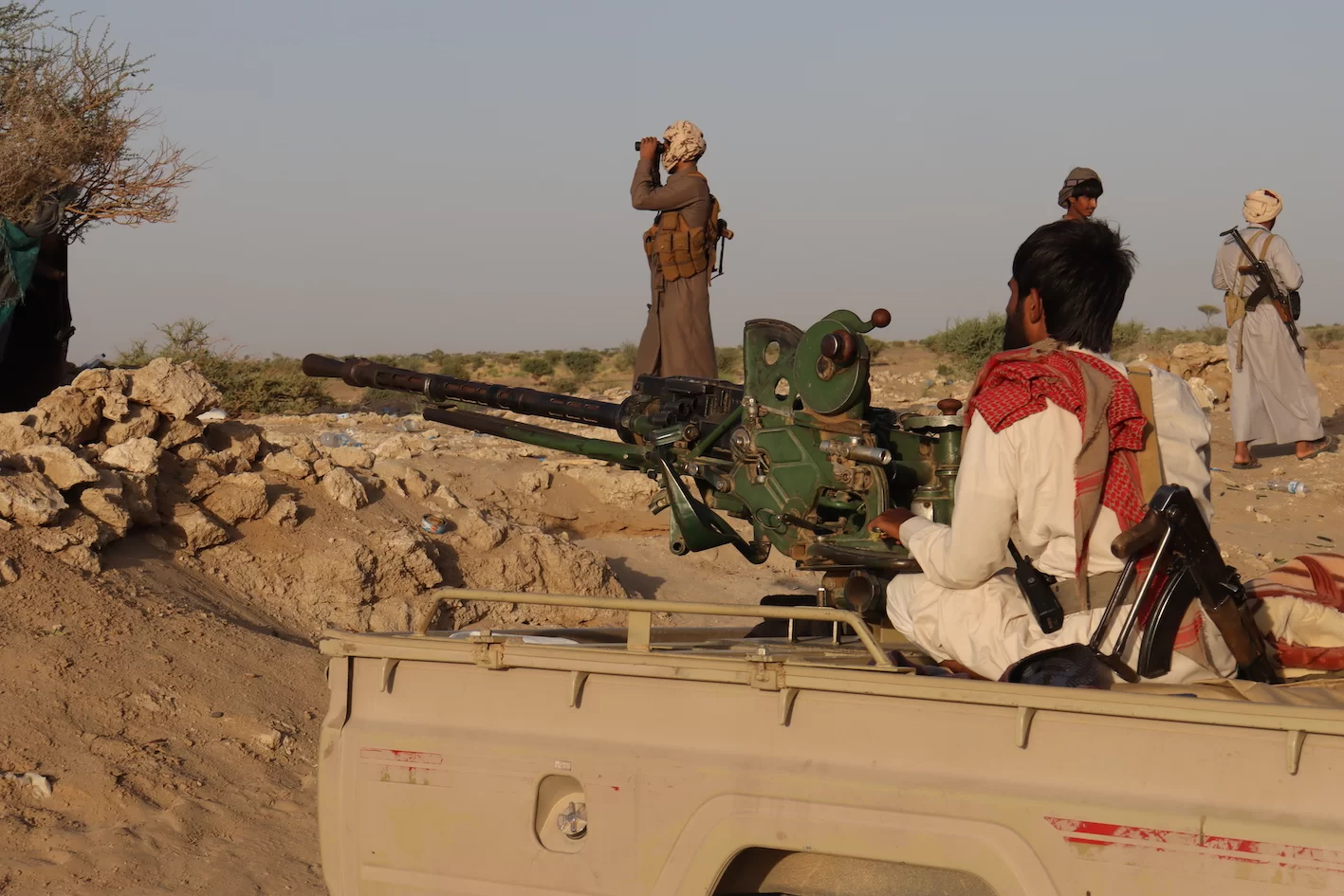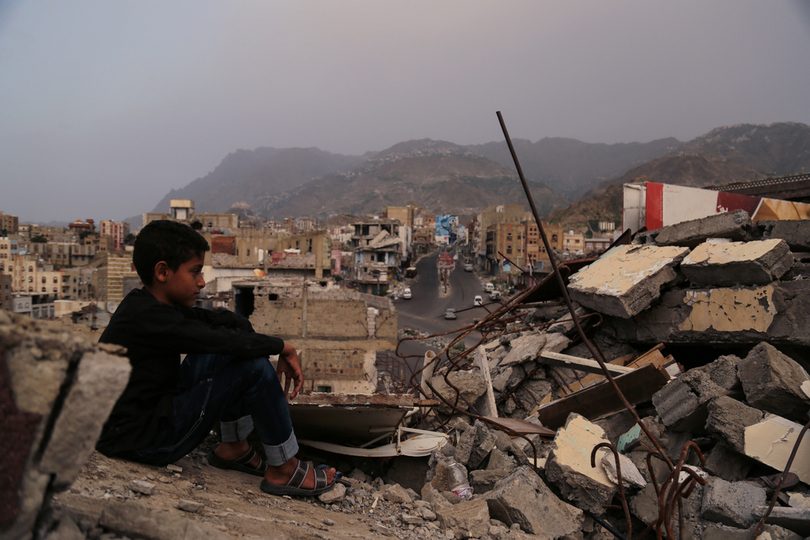The Arab Spring was a turning point in the history of Yemen. It is a story that is still unfolding, and the final chapter is yet to come. The protests that erupted across Yemen in 2011 were an accumulation of years of frustration, local grievances, and the corruption and authoritarianism of Ali Abdullah Saleh—the former president for over 33 years—and his regime. None of the pro-democracy youth who took to the streets imagined that only four years later, the country would be plunged into a civil war and one of the world’s worst humanitarian catastrophes. This failure of imagination owes to the fact that, in the early days of the Arab Spring, Yemeni youth activists and civil society leaders—just like many western policymakers and researchers to this day—were unable to see the Houthis for what they are: an armed theocratic movement with a transnational ideological agenda.
In the beginning of February 2011, it became evident that Egypt’s President Hosni Mubarak was about to be ousted from power. The developments in Cairo boosted the morale of Yemen’s civil society and youth activists, who launched a year of protests in a bid to replace the longstanding military dictatorship with a civil democracy. In the weeks prior to the protests, civil society leaders and left-wing activists held a meeting in Sanaa with representatives of the Houthi movement to invite the Houthis to join the protests. Yemen’s pro-democracy movement—including students’ unions, human rights and advocacy groups, and even political parties—generally saw the Houthis as a provincial insurgency from the northern province of Saadah.1 The Houthis had been fighting the military regime in Sanaa from 2004–2010, and they repeatedly claimed that the regime forced war on them and that they had no other option but to defend themselves. Although the Houthis were clearly a traditionalist religious group, they appealed as a revolutionary, anti-establishment group that shared the same political grievances with Yemen’s pro-democracy movement. Civil society activists saw no reason to be wary of the Houthis if they joined the anti-government protests peacefully and endorsed the same pluralist democratic platform. Little did the pro-democracy activists know that, only a few years later, they would be terrorized by a Houthi cartel and held in Houthi prisons and subjected to all kinds of torture and abuse.
Soon after the 2011 meeting with youth activists, the leader of the Houthis, Abdulmalik Al-Houthi, announced his movement endorsed the demands of the Yemeni youth and that the Houthis would be joining the pro-democracy uprising. The young and enthusiastic protesters celebrated the announcement and welcomed the Houthis with open arms. This decision would prove to be catastrophic.
In March 2011, the Houthis struck a deal with tribal leader and notorious arms trafficker Fares Manaa to attack the main city of Saadah in North Yemen. Fares Manaa is sanctioned by the UN Security Council for supplying weapons to Al-Shabab in Somalia in violation of the UN arms embargo.2 The Houthis appointed Manaa as the new governor of Saadah and, while they took advantage of Manaa’s tribal connections, the Houthis also took control of the military and security structures in the North of the country. Saadah was thus the first province to fall to Houthi hands, and the group imposed a reign of terror while also taxing and extorting the public. Despite these developments in the North, Yemeni as well as international attention was largely fixed on the pro-democracy protests in Sanaa. From their stronghold in Saadah, the Houthis started advancing militarily, trying to push their presence into new territories.
Meanwhile, the civil protests in Sanaa continued for the remainder of 2011 and, due to growing international pressure, President Saleh signed a deal that would grant him and his family immunity for his crimes in exchange for him stepping down from power. The deal, known as the Gulf Cooperation Council (GCC) Initiative, called for forming a coalition government, organizing a national dialogue to draft a new constitution, and electing Saleh’s deputy Abdurabuh Mansoor Hadi as the new president of Yemen.
The Houthis opposed this and rapidly positioned themselves as the main opposition force to the GCC Initiative and the newly formed government. Their stated justification for rejecting the deal was that Saudi Arabia, the U.S., and other Western powers had conspired against the Yemen’s democratic revolution. The Houthis also said they would not hand over their weapons or territory to a “western-stooge” government. Saleh, for his part, was not satisfied with the outcome of the initiative. Although the election gave him a face-saving exit, he was humiliated. Subsequently, signs of a new alliance between the Houthi movement and Saleh and his supporters began to surface, as the two parties agreed to temporarily set aside their history of conflict to unify against the fledgling government. This plunged Yemen into war and shattered hopes of a transition to a constitutional democracy. This turn of events would not have come as much of a surprise to Yemen’s democracy movement or to the world at-large had greater attention been paid to the ideological underpinnings of the Houthi movement.
The Houthi Ideology
The Zaydi school of thought emerged in North Yemen in 893 CE and established a ruling dynasty which lasted until September 26, 1962, when the Zaydi imamate was replaced with a new republic.3 Of all the Shia schools, Zaydism is the closest to Sunni Islam. Zaydis are distinct from the Twelver Shia which predominate in Iran in that they do not believe in the Twelve imams and do not view those imams as individuals with supernatural powers or as the representatives of God on earth. Zaydis do, however, believe that imams should meet specific requirements to rule, including being a descendant of the Prophet Mohammed, having personal piety, being qualified as a religious scholar, and not having any physical imperfections. In Zaydi theology, the imam is not accountable to the public, only to similarly qualified scholars who are also the descendants of the prophet. 4 On the basis of these religious ideas, Zaydi society was historically rooted in a strong caste structure and the different imams that ruled their community derived their power in large part from the traditional Zaydi scholars.
The Republic of Yemen that was created after the toppling of the old monarchy in 1962 strove to establish itself as a modern republic based on popular sovereignty and equality of citizenship. Further, the Yemeni legislative branch was empowered to regulate Islamic jurisprudence within the framework of the constitution, in order to make the Sharia conform with modern laws and convention. 5 Through this, the new state worked to eliminate discriminatory measures and eradicate the social caste system rooted in Zaydism. Not only was the political system modernizing, but the educational system went through a total transformation. The state created schools that taught modern natural and social sciences in addition to teaching the ideals of the republic. Meanwhile, the Zaydi religious schools were no longer permitted to provide general education. The traditional Zaydi leadership and community resisted and struggled to cope with this new situation, and the dynamics of this struggle between the Zaydi leaders and the state took a further turn in 1990.
In that year, following the unification of North and South Yemen, the central government in Sanaa declared a new constitution based on civil democracy and political pluralism. Eventually, many Zaydi scholars announced they would recognize democracy and the right of the people to choose their rulers. Other Zaydi leaders, however, rejected the scholars’ announcement, fearing the new republic would lead Zaydism to extinction. This faction included Badr Al-Deen Al-Houthi—a prominent Zaydi scholar and the father of Abdulmalik Al-Houthi. Although not a scholar, Hussein Al-Houthi—Abdulmalik Al-Houthi’s elder brother and founder of the Houthi movement—also rejected the scholars’ announcement to recognize democracy.6
In the early 1990s, a new Zaydi revivalist movement known as “The Believing Youth” began to emerge. At the time, a number of traditionalist Zaydi scholars who enjoyed considerable status in the province of Saadah began running private courses to promote the Believing Youth in an attempt to keep Zaydism alive. Many secular critics warned the Zaydi courses were a quiet attempt to restore the Zaydi theocracy under the camouflage of the republic. The Zaydi scholars, however, were determined to oppose calls to reform, and they argued that the secular intellectuals of the republic were leading a “cancel culture” instead of accepting different opinions and ideologies.7
Hussein Al-Houthi participated in the parliamentary elections in 1993 and served as a parliament member until 1997. But he also began preaching against the republic, and this intensified after he visited Iran along with his father in 1995. Hussein Al-Houthi was inspired by the idea of merging the Zaydi school of thought with the Khomeinist revolutionary ideology of Iran. Subsequently, the Believing Youth started shifting towards his teachings. Then, Al-Houthi managed to take control of the movement and push out its founders. After 2000, the movement started to become militant, mirroring Hezbollah in Lebanon.8
When the first war erupted between the new Houthi movement and the state in 2004, the traditional Zaydi scholars denounced Hussein Al-Houthi and assured President Ali Abdullah Saleh and the Yemeni public of their commitment to the republic.9 Abdulmalik Al-Houthi came to lead the Houthi movement after the death of his brother and father in the first and second (2005) wars. The traditional Zaydi scholars, however, did not see Hussein or Abdulmalik Al-Houthi as sufficiently qualified religiously to lead and to revive Zaydism in Yemen. In addition, the heavy hand of the Sanaa government during the six wars from 2004 until 2010 made the traditional scholars reluctant to get too close to the Houthis, or to show signs of sympathy and support.
This changed in February 2012, when traditional Zaydi scholars joined with the Houthis faction to sign the “intellectual and cultural manifesto.” The manifesto is a summary of the Houthi interpretation of Islamic jurisprudence, and of their vision for internal and foreign policy. The significance of this document is the emphasis it puts on the divine right of rulers as exclusive to the descendants of Prophet Mohammed. It states clearly that knowledge of Islamic jurisprudence is passed through lineage and that the “guidance to truth” is through the descendants of the prophet, known as Ahl Al-Bayt or the “People of the House.”10
The manifesto also endorsed the political and religious leadership of Abdulmalik Al-Houthi, describing him as a “beacon for people” who can lead the nation in all aspects of life:
We believe that Allah has favoured Ahl al-Bayt and made them guides to the nation and inheritors of the Book (Holy Quran) until life ends on earth as He makes a specific person at a particular time be a beacon for people and capable of taking care of the Ummah (Muslim Nation) and promoting it in all its fields.
One clear feature of the manifesto is that it is deeply influenced by Khomeinism. The document states that it is Houthi followers’ duty to promote virtue and prevention of vice. It is also their religious duty to call for jihad against the wrongdoers and to stand against the arrogant and the enemies of God. In our time, the main enemies of God are “Israel and America and their supporters, allies and whoever stands on their side in their hostility against Islam and Muslims”:
We believe that inviting all to do good, promotion of virtue and prevention of vice as well as standing up to those who are arrogant are of the most crucial religious duties that people have to do. It is also a religious duty commanded by Allah to be loyal to worshippers of Allah and to be foes of the enemies of Allah – according to Sharia – especially the heads of infidelity in our time, foremost among which are America, Israel and whoever help, befriend and/or stand with them in their hostility against Islam and Muslims; “Thou wilt not find any people who believe in Allah and the Last Day, loving those who resist Allah and His Messenger.”
The publication of the manifesto in 2012 raised alarm bells among many Yemeni intellectuals as the Houthi program and ideology represented a clear threat to the ideals and principles of a civil republic. The manifesto says that power is in the hands of God, not the people, and that God entrusts this power to a selected individual and social caste, i.e., the descendants of the prophet. The manifesto, as such, rejects the Yemeni constitution and it calls for the promotion of virtue and prevention of vice based on the interpretation of Abdulmalik Al-Houthi, as a selected leader.
In effect, the manifesto was also a declaration that the Zaydi leadership was now united under the Houthis. Moreover, following the endorsement of the traditional Zaydi scholars, Abdulmalik Al-Houthi came to be seen as the selected leader that “God chose to be a beacon for people.” The followers of the Houthis see Hussein and Abdulmalik Al-Houthi as leaders and revivers of Zaydism who remained true to their teachings and beliefs, and their message must now spread across the country. The killing of Hussein Al-Houthi made him a martyr in their eyes and the resilience of Abdulmalik Al-Houthi during the Houthis’ six wars with the state made him look defiant. Meantime, the traditional Zaydi scholars opened their private schools and camps for the Houthis to recruit and spread their ideology and agenda. The Houthis, from their stronghold in Saadah, subsequently began recruiting large numbers and extending their influence into other provinces reaching all the way to Sanaa.11
The Iranian Connection
The Houthi political ideology is based on the teachings of Hussein Al-Houthi and deeply influenced by Khomeinism. The familiar Houthi chant “Death to America, Death to Israel, Curse on the Jews and Victory to Islam” came as a direct result of Hussein Al-Houthi’s visit to Iran and is a clear sign of Tehran’s continuing influence. The Houthis believe that they are fighting U.S. imperialism and a world order that is run by Zionists. They have nothing but enmity toward the Jews, who are perceived as the source of all evil. They further believe that the Yemeni government, political parties and civil society are subservient to U.S. interests in Yemen. Likewise, the Houthis see Saudi Arabia as subservient to the U.S., and they do not believe the kingdom’s current rulers are worthy of being the custodians of the holy mosques and the holiest land for Muslims.12
In its bid to end the U.S.-led regional order, revolutionary Iran has sought to empower militias and insurgents to weaken central governments across the Arab world. This has proven effective in countries like Iraq, Lebanon and Palestine. When the Zaydi leadership and the Houthi movement were united under Abdulmalik Al-Houthi in 2012, they began to prove to Iranian regime that they are an insurgency worth investing in.
In late 2011 and early 2012, Iran initially handed the “Yemeni file” over to Lebanon’s Hizbollah to manage it, as Hizbollah is more familiar with the Arab world. Hizbollah then started organizing seminars and conferences for Yemeni youth activists. The Houthis were the main point of contact on the ground for Hizbollah’s recruiting efforts of Yemenis from all backgrounds. In Lebanon, the handler of the Yemeni delegations is a man called “Abu Mustafa.” His real name is Khalil Yusif Harb.13 Harb is known as a senior Hizbollah commander and was designated as a global wanted terrorist by the U.S. in August 2013 with a reward of five million dollars. 14
Initially, the conferences that Hizbollah organized in Yemen discussed the popular demands of the Arab Spring (or the “Islamic Awakening” as Hizbollah and the Iranian government have called it) and prospects for change in the region. The real aim of the conferences, however, was to begin a thorough vetting process to determine who from the various Yemeni groups would be receptive to Hizbollah’s and Iran’s messages and also cooperative. When individuals showed an interest in further cooperation, they would be sent to meet an Islamic Revolutionary Guards Corps (IRGC) representative in Lebanon known as “Abu Hadi.” Abu Hadi is an Iranian IRGC commander who had fought in the Iran-Iraq war in the 1980s. He is fluent in Arabic and has been living in Lebanon for many years. Meeting with him was an initial step for many Yemenis before traveling onward to Iran for further conferences and events.
Between 2012 and 2014, Houthi delegations began regularly travelling to Lebanon and Iran. Some of these delegations included militant commanders. They were received by IRGC officers who provided training in military telecommunications, missile attacks and drone attacks. According to two former Houthi members who travelled frequently to Iran and Lebanon, different Iranian regime units received the various Houthi and other Yemeni delegations. The units were from the IRGC, the Foreign Ministry, the intelligence services, and the Supreme Leader’s office. Significantly, these units did not communicate or exchange information with one another. Instead, all communication went vertically, that is, directly to the Supreme Leader’s office and his closest trustees. According to a Yemeni politician interviewed for this research, while visiting Iran in 2012, he ran into a tribal delegation headed by Saleh Al-Samad; neither one of the Yemeni groups knew of the other’s presence in Iran. Al-Samad was a senior Houthi figure who led the Houthi Supreme Political Council in August 2016 until his assassination in April 2018.15 The Iranians, moreover, instruct the Houthis to only communicate up the chain and they do not share information between the different Houthi groups. This tight control of communication and information by both the Iranian and Houthi leaderships helps them to maintain a high level of operational secrecy and security. It is also critical to maintaining the top-down control over both the Houthi movement and the Iranian regime, not to mention the Iranian regime’s control and influence over various Yemeni factions.
As time passed, IRGC operatives became more comfortable engaging with Yemeni delegations coming to Iran and started to communicate directly with the Houthis. Despite Tehran’s growing engagements with the Houthis, Lebanon remained an important hub for the Houthis and Hizbollah also remained actively engaged with the Houthis.
The Yemeni government has accused Iran of aiding and abetting the Houthis for many years. The Iranians have repeatedly denied this despite the growing evidence of Iranian support for the Houthis. In 2012, United States officials publicly acknowledged for the first time Iran’s support for the Houthis. An American official told The New York Times that the U.S. helped the Yemeni coastal authorities seize weapons shipments after they intercepted Iranian smugglers backed by Iran’s Quds Force.16 The shipment was an attempt to replace old weapons used by the Houthis.
In January 2013, Yemeni authorities with U.S. assistance seized a boat carrying Iranian weapons meant for the Houthis.17 According to a Yemeni security official, it was the biggest shipment seized by the Yemeni coastal guards to date. The shipment carried surface-to-air missiles, C4 military-grade explosives, and rocket-propelled grenades, in addition to other types of weapons. This increase in material and arms support showed that the IRGC was becoming ever more involved in the Yemeni conflict. Tehran, however, kept denying that it was sending arms to the Houthis despite mounting evidence and growing accusations by the international community. In the many meetings and events that brought Yemenis to Lebanon and Iran, Hizbollah handlers carefully selected a few Yemenis to meet “Abu Hasan.” Abu Hasan was appointed directly by Iran’s Supreme Leader Khamanei to oversee the whole Yemen operation. Abu Hasan worked on the Yemeni file for many years without appearing in public until October 2020, when he was revealed as Hasan Irlu, Iran’s de facto ambassador to the Houthis.18 In December 2020, Hasan Irlu was sanctioned by the U.S. administration for being an associate of the former IRGC commander Qassim Soleimani.19
The Houthi Cartel
When the Houthis established their so-called “political council” in Sanaa in 2012, they immediately appointed sympathetic political and tribal figures to assume roles in the council. Appointees also included activists that Iran had recruited in the trips it organized for Yemenis. The political council represented the Houthis during various political dialogues and UN-led negotiations, including the National Dialogue Conference—the 10-month convention between 2013 and 2014 that negotiated the framework of the new constitution. Despite the talks they attended, political council members have no real influence on the Houthi movement, and they are not part of the decision-making process. The council, instead, is more of a public relations arm that attempts to provide political cover for the militant movement.
The Houthis have acquired power and they maintain it through terror. Like many Islamist extremist groups, the movement began by targeting vulnerable minorities. In 2007 in Saadah province, the Houthis launched a campaign of persecution against Jews and, as a result, many Jewish families were expelled from their villages and sought refuge in the capital Sanaa. When the Houthis took over Sanaa in September 2014, Jewish families were singled out for harassment and intimidation. In 2015, the rabbi of the Jewish community was imprisoned and, in a very humiliating incident, his family was made to publicly chant the Houthi slogan including the phrase “curse on the Jews.” Since then, Jewish families have continued to flee the country and, in March 2021, the Houthis finally forced the last remaining three Jewish families out, thus ending the presence of the Jewish community in Yemen after more than thirty-five hundred years. The Bahai minority has also been subject to imprisonment, harassment and intimidation. In February 2018, the Houthis sentenced the head of the Bahai community Hamid Haidrah to death. In August 2020, the Bahai leader was released, but he and his entire family were then expelled from Yemen, and the Houthis confiscated their properties in Sanaa.
As its power has grown, the Houthi movement began terrorizing the rest of society, too. When the Houthis took over Sanaa in 2014, more than 120 Sunni imams were removed from mosques and prevented from delivering Friday sermons at gunpoint. In the provinces they took over, more than twenty Sunni mosques and school were bombed and flattened. In April 2014, in the village of Hamdan near Sanaa, teachers at a public school refused a letter sent by the Houthis instructing them to teach the words of Abdulmalik Al-Houthi. Houthi armed men showed up the next day and bombed the school in front of the teachers. Mohammed Al-Yamani was one of the few journalists who documented the incident, but he was later killed by the Houthis in March 2016. Parliament members and tribal leaders who criticized the Houthis have also had their homes destroyed. The Houthis routinely film their demolition of houses, schools and Sunni mosques for use in their propaganda and recruitment efforts.
Soon after reaching Sanaa in 2014, the Houthis turned on Yemen’s civil society, including many of the same pro-democracy activists who once welcomed Houthi participation in the 2011 Arab Spring revolution. At the time, Yemeni civil society was growing increasingly critical of the Houthis, and they started organizing protests demanding the Houthis end their armed presence of Sanaa. In response, in February 2015, the Houthis abducted several civil activists in the midst of a public protest and then tortured them late into the night. One activist was killed, and his body was dropped off at one of the main hospitals in Sanaa. Pro-democracy figures have since had to flee the capital and find refuge elsewhere.
Like a cartel, the Houthis use excessive violence to intimidate the public and spread fear. In a televised speech in September 2015, Abdulmalik Al-Houthi specifically directed his followers to target journalists and writers because he considers them more dangerous than enemy combatants. More than 83 media outlets have since been shut down and journalists have been subjected to harassment, threats, and arbitrary detention; some have even been killed. Houthis have deployed a huge number of informants who watch and monitor neighbourhoods. They also track activists writing on social media and have forcefully disappeared critics on Facebook and Twitter.
Abdulmalik Al-Houthi does not only obsess about crushing political dissent. He is, like Hasan Nasrallah, the leader of Hizbollah in Lebanon, also a religious fanatic who constantly directs his followers to monitor women’s clothing, shut down cafes which do not enforce segregation and, most recently, to ban women from working in restaurants. In March 2021, his followers abducted three young Instagram fashion models for “damaging public piety.” Abdulmalik Al-Houthi directs his followers to be vigilant and monitor the society very carefully, to enforce his moral code and also to strike against any possible resistance against him and his movement.
Abdulmalik Al-Houthi also regularly preaches on “anti-imperialism” and the necessity of waging jihad against the disbelievers and the enemies of the “Muslim Nation.” His followers say they adhere to all of his directions and that he will lead them toward victory against the enemies of Islam. Abdulmalik Al-Houthi is the ultimate authority and almost never appears in public. Only the chosen few can meet him personally and, when tribal delegations are taken to Saadah to speak with him, they usually do so through a screen. This is carefully designed to create a holy aura around him. Although a significant number of Houthis are religious fanatics like their leader, the movement has also attracted criminals and convicts. The head of their criminal investigation department in Sanaa was sanctioned by the UN Security Council for running a network of secret prisons allocated for women activists. These women have been systematically tortured, raped, and abused. The families of those women have been blackmailed to pay huge sums of money to release their daughters.
In many ways, the Houthi movement is structured like a criminal syndicate. The movement’s cartel-like structure is formed of “supervisors”, “general supervisors” and Abdulmalik Al-Houthi’s “trustees.” The general supervisors use aliases and rarely appear in public.20 The structure is most apparent in neighborhoods, districts and in state institutions. In the latter, the Houthis have kept the façade of government, but introduced “the supervisors’ network”—a complex of small militias run by Houthi commanders in all state offices and ministries. In each ministry, the supervisor, accompanied by his armed men, oversees the work of the minister and other officials. Supervisors are given unlimited authority; they storm government offices, block ministers’ decisions, and assault or arrest officials if they wish. The supervisors are poorly qualified to govern; instead, they are appointed because of their loyalty to the movement. As an example, in the Ministry of Electricity, the appointed supervisor, a man named “Zabarah,” is a technician who has two qualifications: First, like Abdulmalik Al-Houthi, he claims to be a descendant of the Prophet (from Ahl Al-Bayt). Second, he is very loyal to the Houthi leader. Every week, Zabarah gathers all ministry employees to listen to Abdulmalik Al-Houthi’s sermons. In the Ministry of Oil, they appointed Mohammed Al-Emad, a former cameraman and owner of a pro-Houthi tabloid. In the Ministry of Health, they appointed Taha Al-Mutwakil, a Houthi imam who during the Covid-19 pandemic was preaching conspiracy theories about how the U.S. created the virus to occupy Muslim lands in his Friday sermons. With supervisors like this in charge, the government has been paralyzed and services have deteriorated, including basic services like hygiene and sanitation. This has resulted in the spread of diseases like cholera and diphtheria.
In various neighborhoods and districts, the Houthi supervisors interact with the public and each one runs an armed group. Further, each supervisor has his own turf that he protects from rivals and also exploits to generate income. The most common practice is extorting money out of private businesses, including shops and groceries. In other instances, supervisors exploit fuel shortages and run their own oil black market. An owner of a successful private company interviewed for this research said that days after the Houthis took over Sanaa, a supervisor and his armed men stormed his company and looted everything inside including the cash they had in the safe and his own vehicle. When the businessman tried to complain, he was informed of rumours and accusations that he was an American spy, and that it is best for his safety to stop harassing the supervisor. In January 2020, Adel Al-Mutawakil, a Houthi supervisor, took over the University of Science and Technology—the biggest private university in Yemen—after abducting the university’s president.
This cartel structure has made some supervisors extensively rich within a short period of time. In November 2015, one former tabloid owner turned supervisor who had previously struggled to cover the costs for his paper, began building an eight-story building and roaming the streets of Sanaa with armored vehicles. The wealth generated by a supervisor depends on what he controls, and supervisors regularly clash with each other for control of key turf and institutions.
Despite the fighting between different supervisors on the ground, the hierarchy is very strict. These supervisors must show total loyalty to the movement and its kingpin Abdulmalik Al-Houthi and they have three main tasks. First, they share a percentage of their revenue up the chain, and this is important to keeping the movement alive. Second, supervisors all run an active indoctrination campaign, organizing courses and sermons to teach the public the words of Abdulmalik Al-Houthi and his brother Hussein. The third task is constant recruitment; supervisors regularly visit schools, universities and mosques to recruit youth and children to join the movement and to fight on various battlefronts. Those supervisors exploit people’s poverty and the dire humanitarian situation in Yemen. In interviews for this paper, two families said the local Houthi supervisor forced them to send their children to the battlefields in exchange for humanitarian aid and a small salary. The salaries their children receive and the humanitarian aid they get, although very limited, is the main source of income they have.
Conclusion
Since the end of the imamate era in 1962, the Yemeni state has struggled to form itself as a modern republic. The 2011 Arab Spring protests began as an attempt to revive the spirit of the 1962 revolution and to establish a civil democracy based on equal citizenship. But these Yemeni aspirations have always faced a powerful theocratic backlash. The 1979 “Islamic Revolution” in Iran, and the Tehran regime’s bid to export its revolution, helped to resurrect the traditionalist Zaydi political class which believes in the divine right of rulers who are the descendants of Prophet Mohammed (known as Ahl Al-Bayt). The rise of the Houthi movement was the result of the merging of revolutionary Khomeinism and traditional Zaydism political theology. In the upheaval of 2011, the two revolutions—the “Islamic Revolution” and the Yemeni republican one—were bound to clash.
Since taking over in Sanaa in September 2014, the Houthi movement has continued to undermine the central state and establish an alternative, cartel-like power structure. The Houthis have succeeded in shutting down all political parties, civil society organizations and any free press. Houthi power depends on religious loyalty to the movement and its kingpin, and therefore they will never give the public the power to choose their government. The Houthis do not intend to change their behaviour. Instead, their reign of terror and the chaos in Yemen directly benefits Houthi war lords, and it allows the Houthi movement to extract greater resources from the people and to recruit and grow in large numbers. There is no incentive for the movement to push for a political settlement to the current conflict.
Some Western policymakers and researchers today, like many in the Yemeni pro-democracy movement during the early days of the Arab Spring, mistakenly see the Houthis as a traditionalist rebel group that is only responding to a conflict waged against it first by the Sanaa government and now by foreign powers (mainly Saudi Arabia and the U.S.). A further assumption is that less military pressure on the Houthis will bring them to negotiate. This simplistic view disregards the fact that the Houthi bid to establish a theocracy pre-dates the current conflict and that the movement also receives enormous operational and political support from Iran’s revolutionary regime.
Since 2015, the Houthis have lost some territory due to military operations conducted by the Saudi-led coalition against it and not because of the political talks led by the UN envoy. Therefore, the calls by some Western policymakers to reduce military pressure against the Houthis are counterproductive to achieving peace and stability in Yemen. The world needs to understand the Houthis for what they are: a theocratic, armed movement with a transnational agenda. Like many extremist groups, the conflict and humanitarian catastrophe that the Houthis have caused in Yemen is the result of their extremist ideology and ambitions. Yemen’s core struggle today is to defeat the Houthi movement by rebuilding a state that enjoys a monopoly of power and establishing a republic that is rooted in the principles that many Yemenis have held since 1962, including the belief that all people are created equal and with inalienable rights, including the right to vote on their government.
